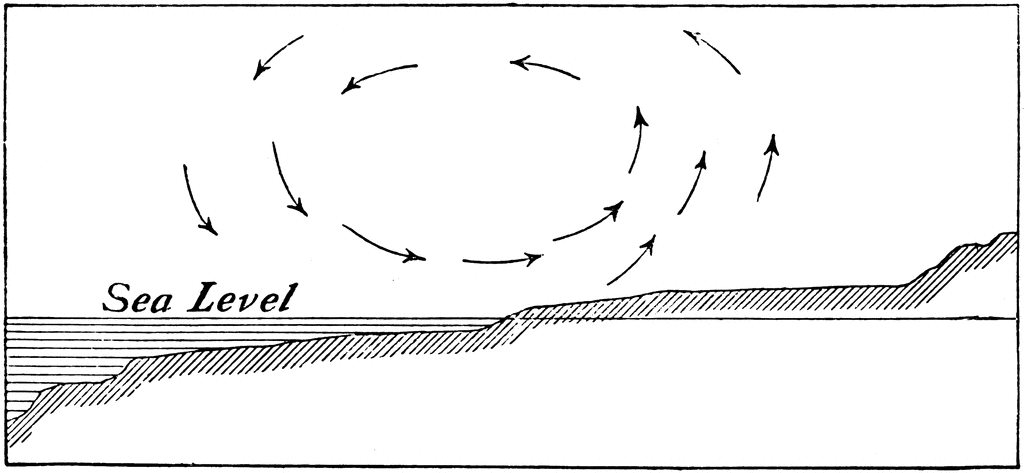Land breeze, Sea breeze, Ash breeze
By Duncan Blair from his Traditional Sail Substack
One of the many things that make traditional sail so interesting is its complete reliance on wind: free energy from the clean, sweet winds of Earth’s oceans.
A small component of this planetary energy is the land breeze/sea breeze pattern.
To begin, I will remind you that the land breeze comes from the sea, blowing onto and across the land. Similarly, the sea breeze comes from the land, blowing onto and across the sea.
In both cases the name “land” or “sea” identifies the origin of the breeze, not its destination.
The First Principle to be understood is that land masses heat up and cool down faster than the bodies of water adjacent to them. The heat source is, of course, the Sun; causing the Earth to heat up when it rises and to cool down when it sets. (Rising and setting of the Sun are the perceived results of the Earth’s daily rotation.)
The Second Principle is the fact that warm air rises—always. And as it rises it leaves “space” for cooler air to flow into.
So, the land breeze is created by the fact that the sea begins the day with a warmer temperature than the land. This warm air rises above the sea, allowing cooler air, coming from the land, to flow onto and across the surface of the sea.
Remember the name of the breeze identifies its origin, not its destination.
Later in the solar “day” the land, because it heats up faster than the water (the First Principle), has warm air rising from it and cooler air from the adjacent water flowing in to replace the warm air; blowing from the sea to the land. This is the sea breeze.
Suppose that you are a fisherman from several centuries past. You have built your boat, sewn her sails and made her cordage. The Land Breeze/Sea Breeze fact-set allows you to go out to sea in the morning with the wind at your back—sailing large, a point of sail also known as a Soldier’s Wind. In this case the land breeze.
After hours of sailing and fishing you can return to the beach using the sea breeze at your back, with the boat low in the water, loaded with fish.
This is a happy scenario showing humans in harmony with the forces of Nature.
But what happens when the bloody wind doesn’t blow, or blows in your face, on your nose, when you need to go home?
Well, you can possibly tack back and forth, slowly getting closer to the beach but not necessarily arriving at the place you left from.
However, as a clever human with a large brain and an opposed digit on each hand, called a thumb, you have another source of power—auxiliary power—known for centuries as the Ash Breeze. Ash, in this case, refers to the dense, close grained, strong wood of the Ash tree-used to make oars.
The Ash Breeze is a short-hand term for humans using oars, always made by humans, to propel their boats, moving them to where they want to go.
It has nothing to do with geophysics, the Sun or differential cooling rates of land and water; no planetary dimension whatever.
But it should make you stop and think about the first humans who figured out how to make these levers called oars and how to install the essential fulcrums, called thole pins, on the gunnels.
Those old guys were smarter than we thought.


